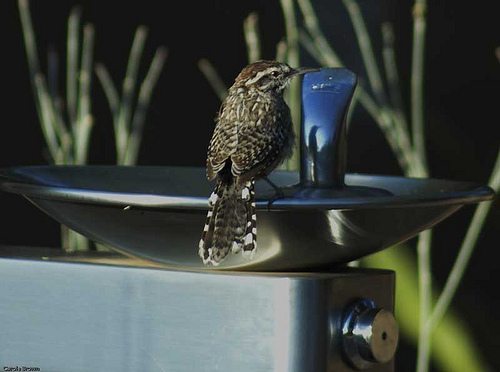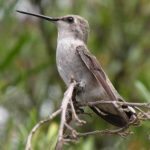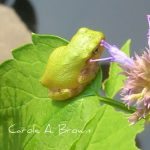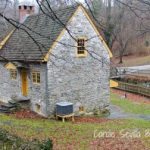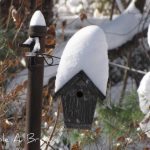Another example of the adaptibility of birds in finding ways to meet their needs in a human-dominated environment. This cactus wren outside Tuscon, Arizona has discovered a very smart way to get a drink and cool off.
Meanwhile, back in Philadelphia, (which is hot enough to feel like Arizona today) the temperature was 97 degrees in the shade with 100% humidity, which kind of feels like trying to breathe in a swimming pool.
I was lethargic, the dogs were lethargic, and so even were the hummingbirds, which normally spend a large part of the afternoon fighting over control of the feeders. It was hard to move, hard to even think.
About 8pm the sky suddenly turned black and a huge thunderstorm broke with violent wind. Trees dropped their branches all around us, but just as soon as it had swept in, it was gone. And with it the horrible heat, leaving a cooling breeze in its wake.
One gift of today was that the Goldfinches have returned from their nesting activities and are now greedily sucking down the seeds from the native sunflowers (Helianthus). They always disappear from the garden when they nest, and I am so excited when they return.
Goldfinches are a common sight in gardens across the UK, known for their cheerful chirping and their vibrant yellow plumage. If you are looking to attract these beautiful birds to your garden, a wildlife garden designed with their needs in mind can be the perfect solution. In this article, we will look at what you can do to create a goldfinch-friendly garden and what kind of plants and features are best for these birds.
The first step in creating a wildlife garden for goldfinches is to provide a good source of food. Goldfinches feed primarily on nyjer seed, which is a small, black seed that is widely available in pet shops and garden centers. In addition to nyjer seed, you can also provide sunflower seeds, millet, and other birdseed mixtures. Be sure to place the seed in a bird feeder that is easily accessible to the birds and that is positioned away from potential predators, such as cats.
In addition to food, goldfinches also need a safe place to nest and raise their young. A birdhouse designed for finches is ideal for this purpose, as it will provide a safe and secure shelter for the birds. The birdhouse should be placed in a quiet and sheltered area of the garden, away from potential predators.
Plants play an important role in a goldfinch-friendly garden. The birds are attracted to gardens with a good supply of nectar, which is produced by flowering plants. Some of the best plants for attracting goldfinches include teasels, sunflowers, dahlias, and marigolds. In addition to providing nectar, these plants also offer a great place for the birds to perch and rest while they feed.
Water is also important for goldfinches, as they need it for drinking and bathing. A small bird bath or pond is ideal for this purpose, and you can even add a fountain or other feature to provide some movement and interest in the water. Just be sure that the water source is located in a safe place, away from potential predators.
Finally, goldfinches need a safe and secure place to roost at night. A tall shrub or small tree can provide a great roosting spot for the birds, and you can even plant several shrubs or trees to create a “roosting area” in your garden.
More From Ecosystem Gardening:
Submit your review | |

